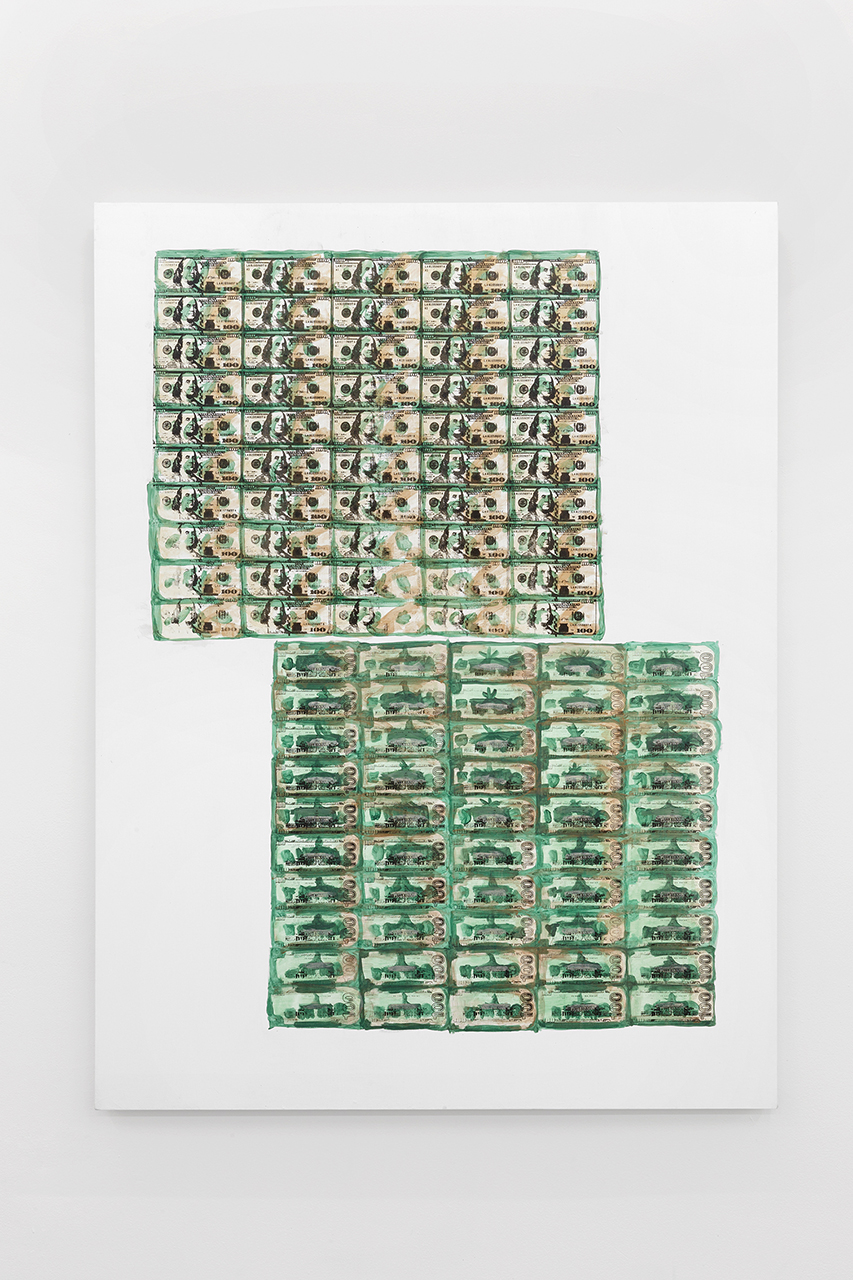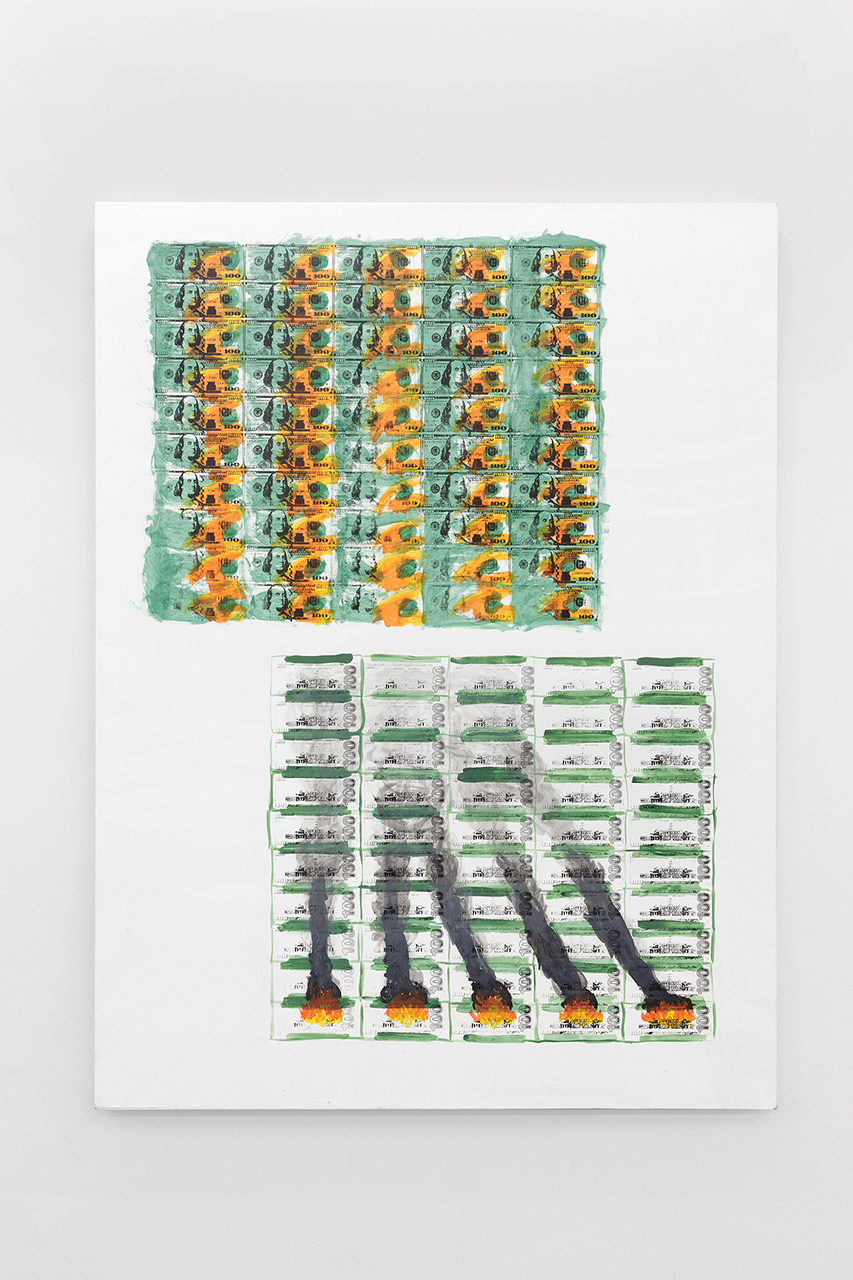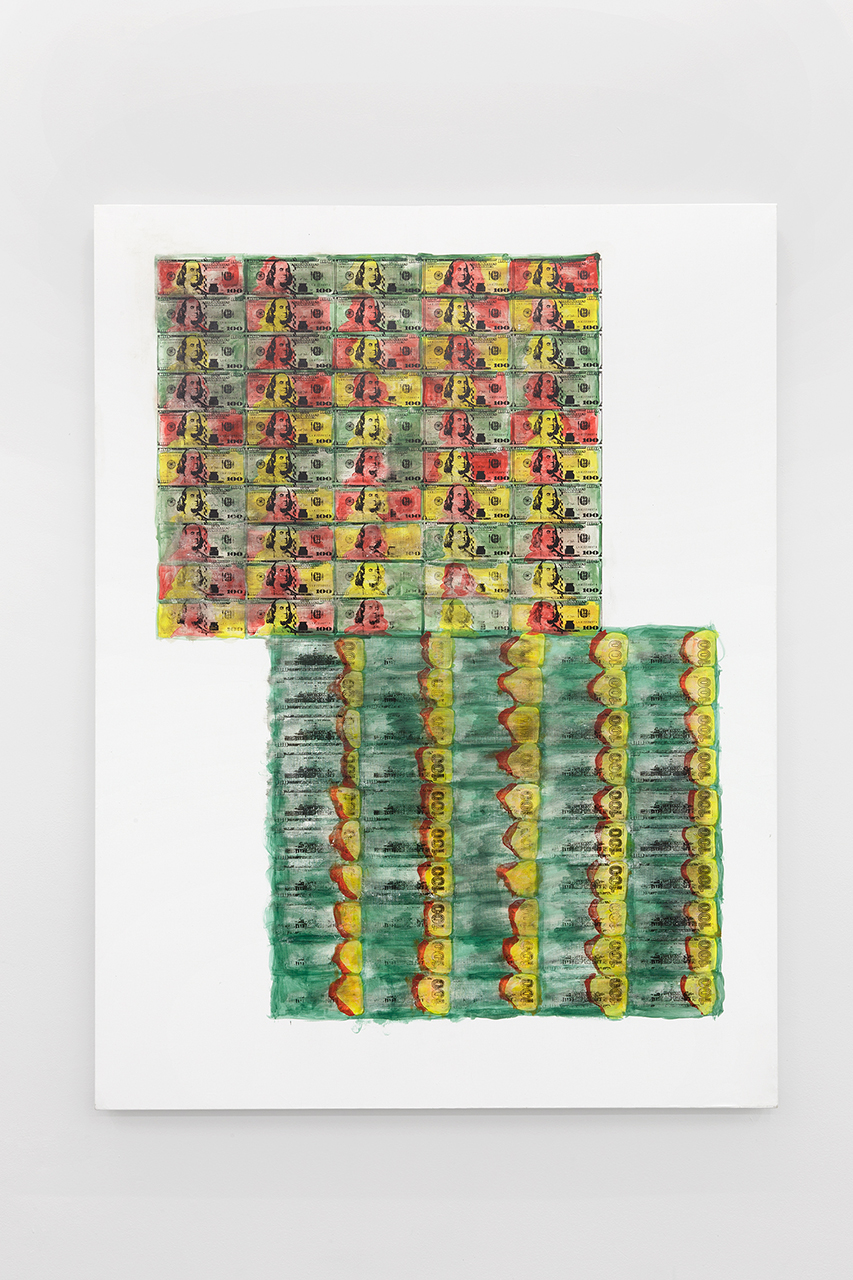ANTEK WALCZAK / KOMPROMAT
February 7 - April 1
House of Gaga, Mexico D.F.
Download press release
01 / Installation Views
02 / Exhibition Walkthrough by the Artist
03 / Works
§01 / Installation views
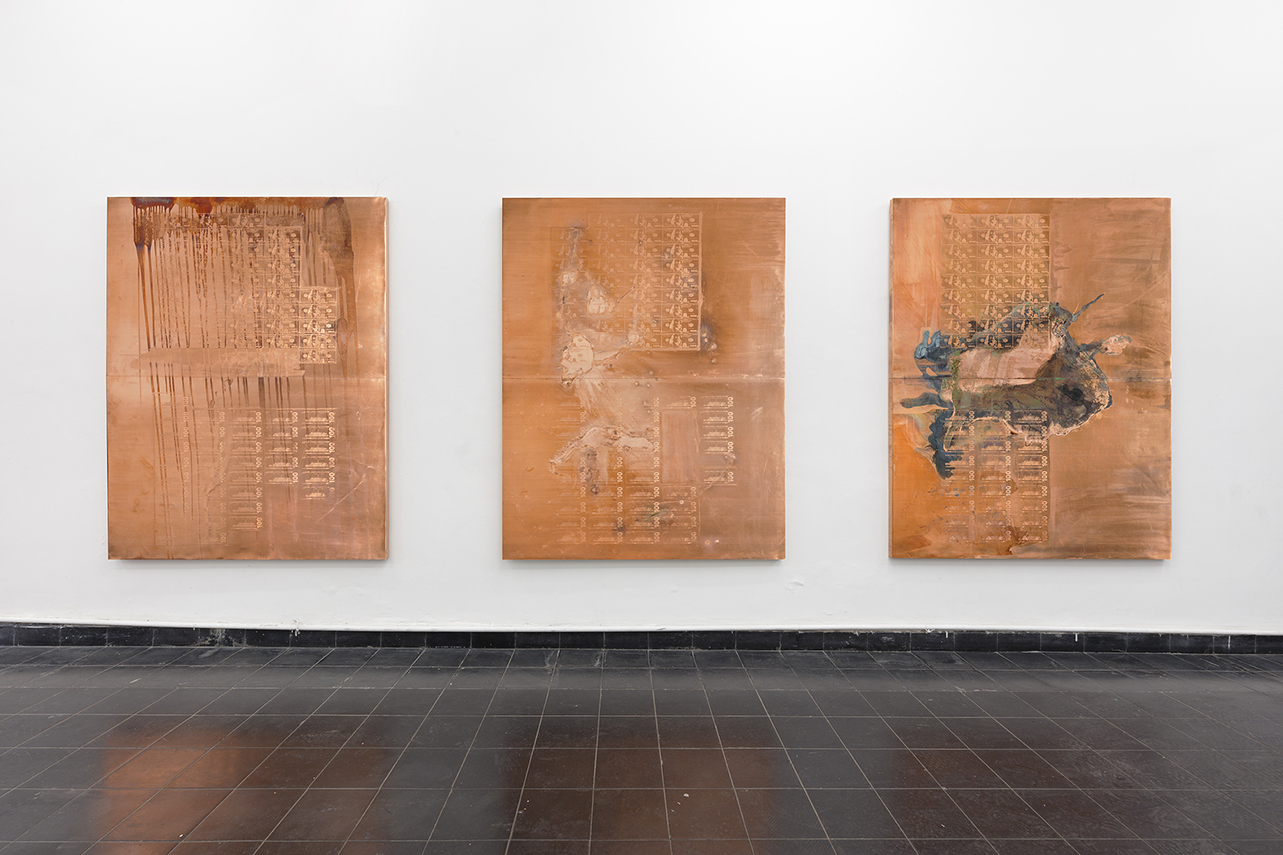
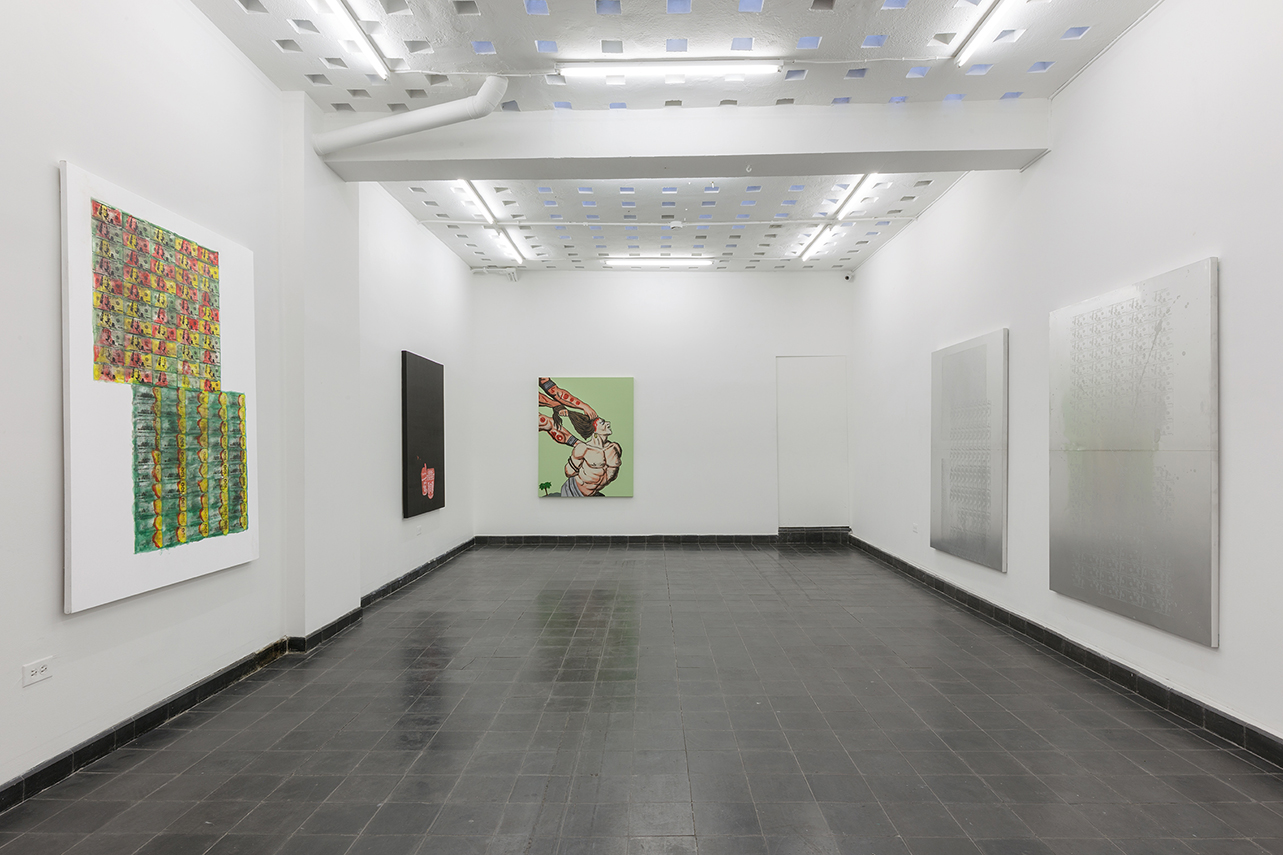
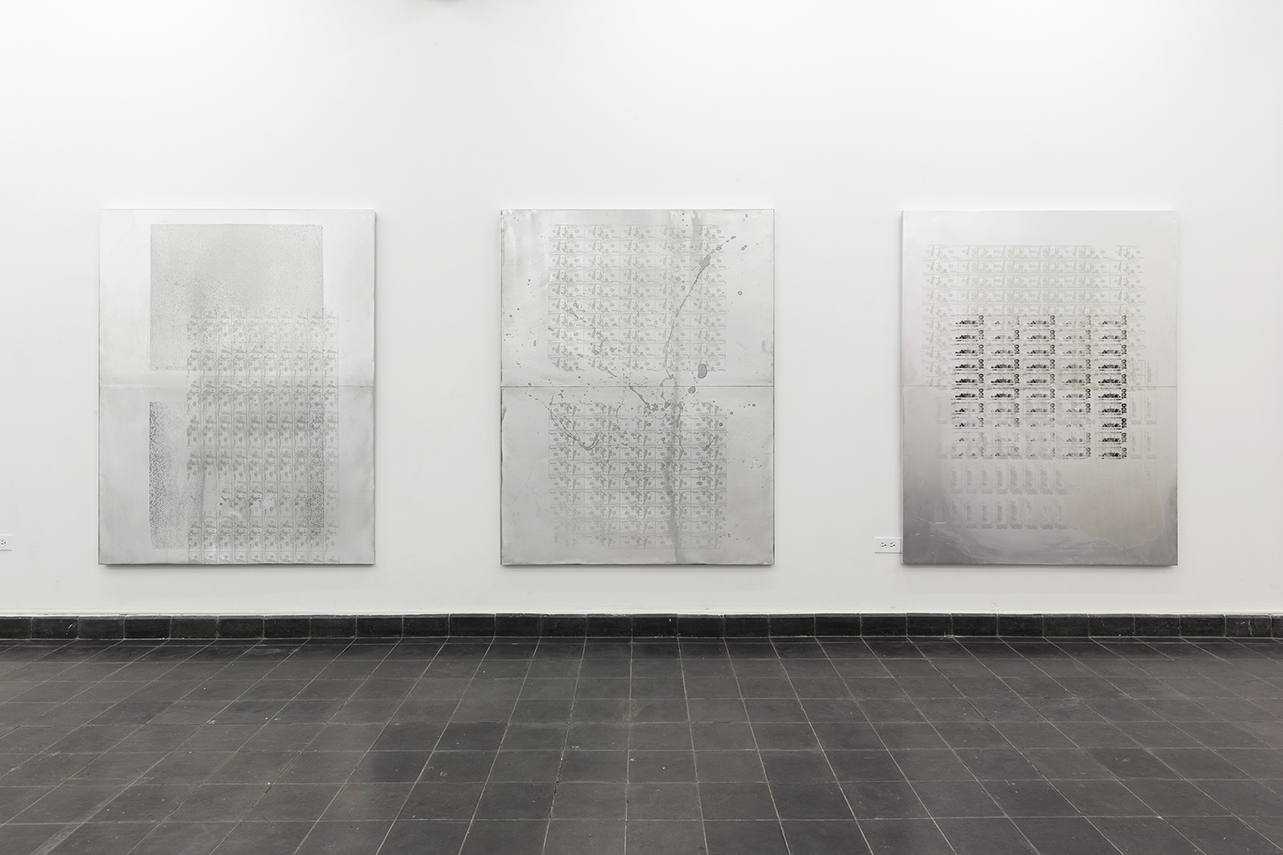
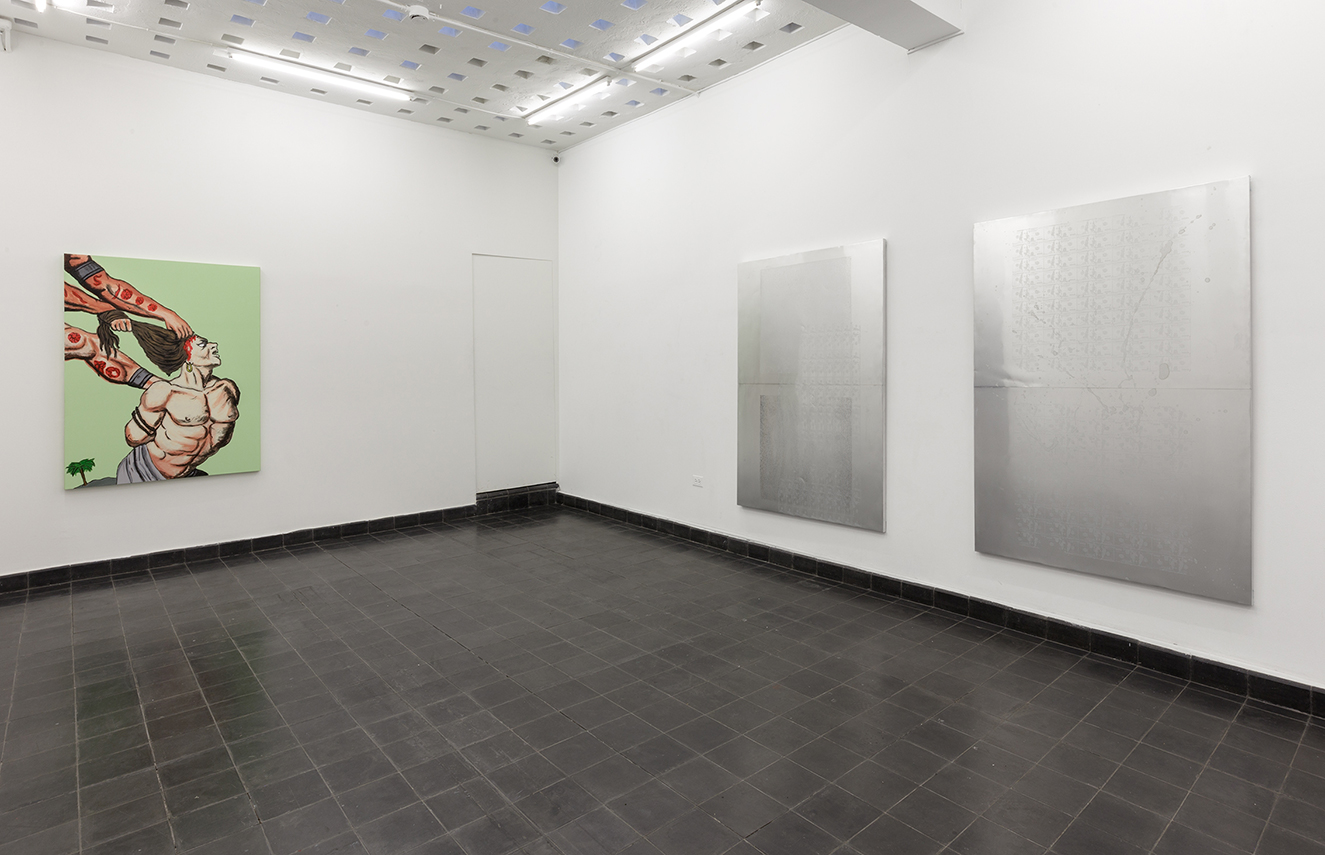
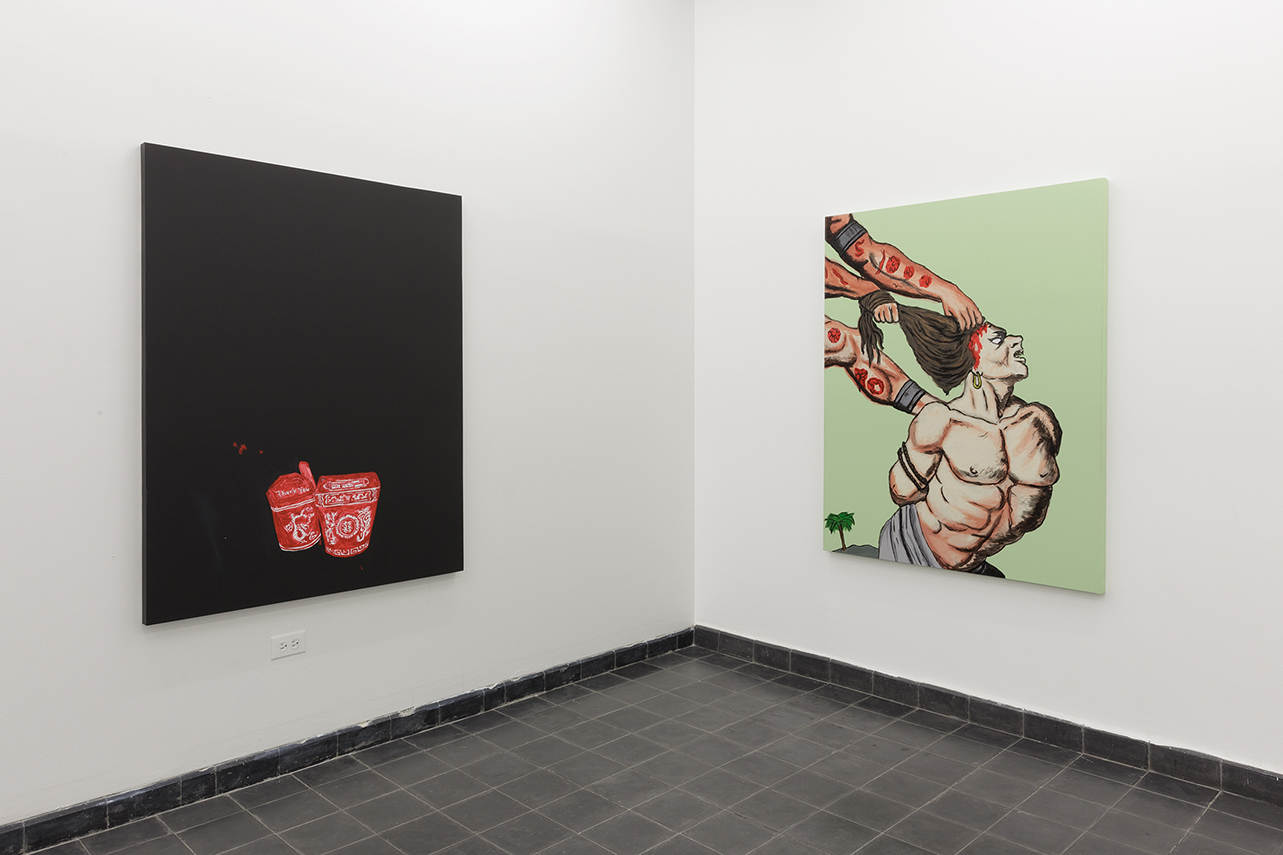
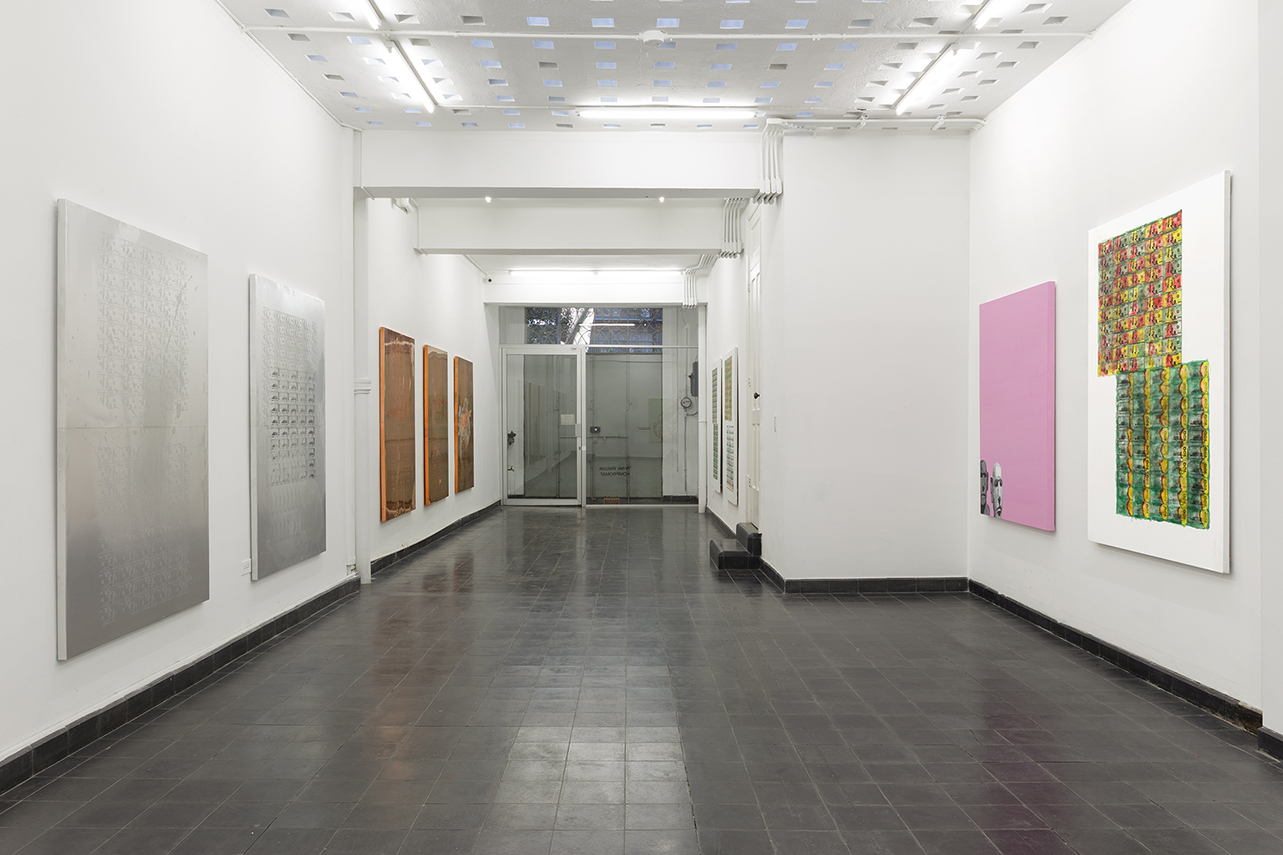

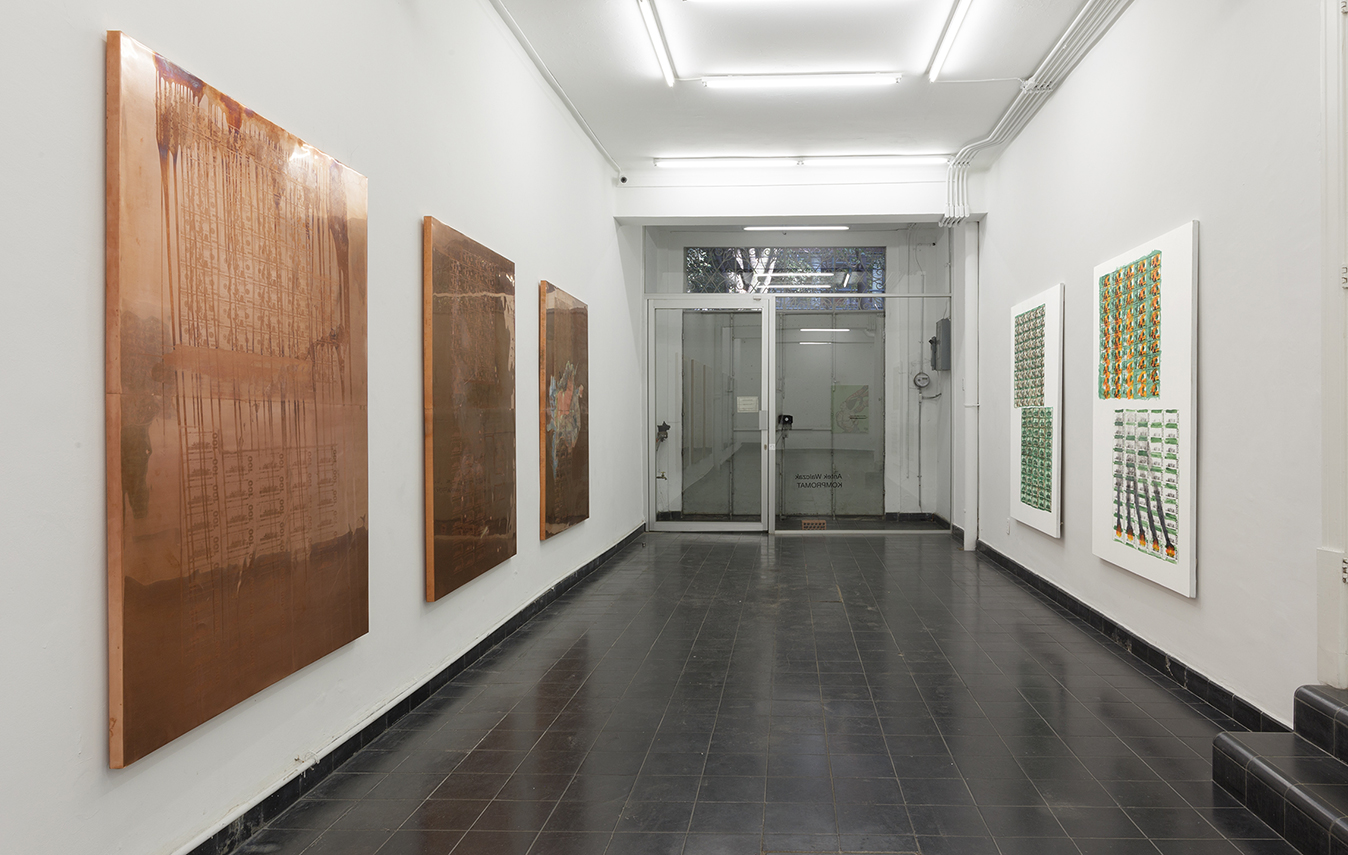
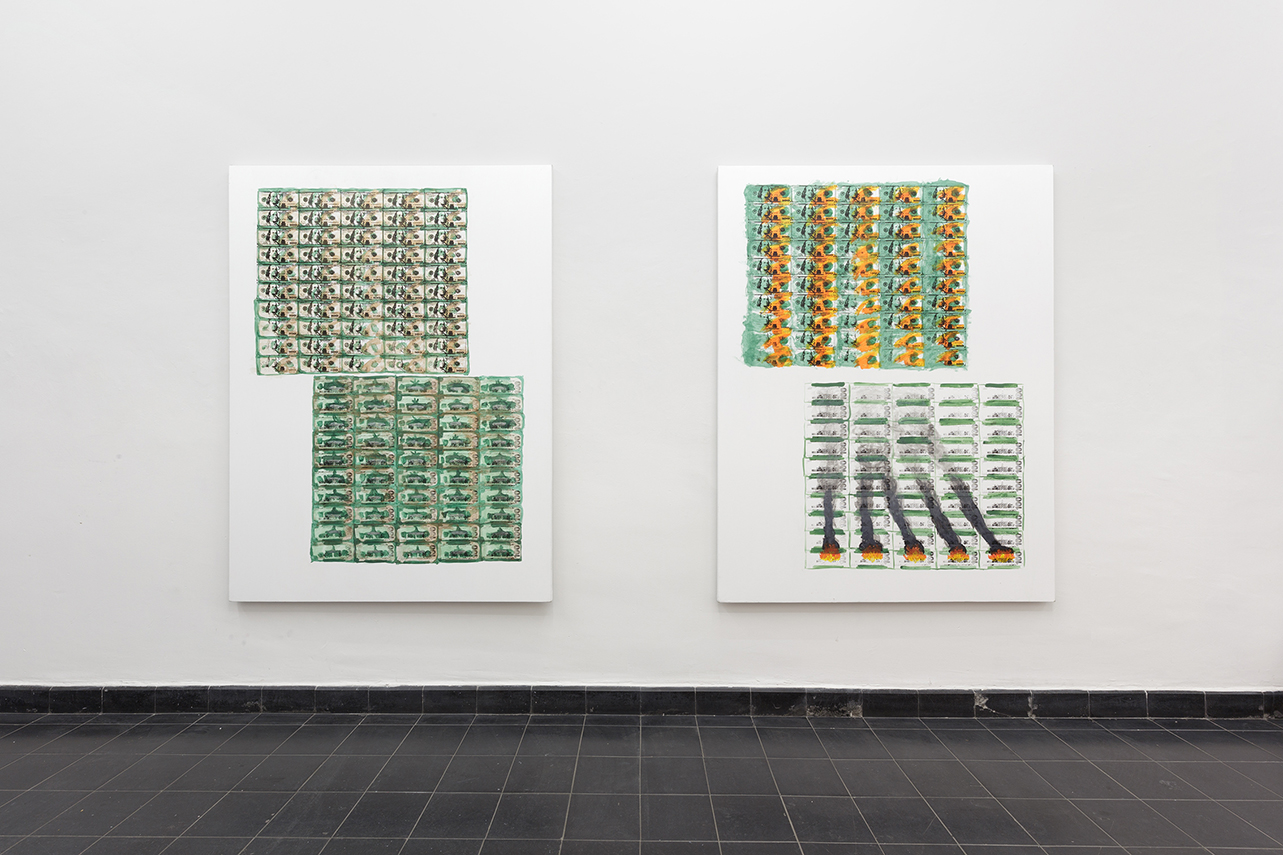
§ 02 / Exhibition Walkthrough by the Artist
One of the main concerns or approaches with the paintings in this show is the question of how to examine objects, thoughts, or moods that populate our day-to-day contemporary consciousness and attempt to reframe them from a distance that might encompass centuries while addressing phenomena that are fundamental to the human experience. In a way, without being a philosopher, the artist borrows from philosophy a concern with the primary conditions of cognition.
Take money, for example. Anyone with a rough understanding of art history might see a painting of money and immediately think of Warhol, silkscreens, Pop Art, confronting the pretentiousness of elitist high culture with a more crude, quotidian low culture. At a second glance, however, one also might notice the operations and transformations that the representations of money have undergone in these works. What is going on with the metals used as support, and the apparently natural processes distressing and eroding their surfaces (the Culture series)? And what to make of the underpainting in the three silkscreens on canvas (Downfall, War, Tribe of One), or for that matter, the three more or less direct representations painted from photographs (America, Life, Death)?
If one pauses to think about money for awhile, it is possible to ignore the dualities learned in childhood, the good-evil binaries of hard work and thrift versus selfishness and greed, and as well move on from the shorthand symbolism of money as everything that feels wrong with the world, be it capitalism, Wall Street, economic inequality, gentrification, or the art market. Abolish the art market, and what happens next? The question of assigning value to a series of objects would nonetheless remain, whether by attempting to erect some formalist structure for analyzing aesthetics (as was attempted before via semiotics and linguistics) or by relying on the power and judgement of an elected committee of tastemakers to decide what laymen see in art galleries (representational policies in the arts as extension of government). The only thing natural about valuation is the role played by human psychology in creating autonomous series of value that order the world as much as the series of real objects determined by laws of nature. Both types of orders - value and reality - occur in parallel and occasionally converge in surprising ways without being necessarily opposed in a rational way (nice things can perish and appear in nature, while rottenness persists in human values).
The ideas presented in the paragraph above are taken from the artist's initial readings of Georg Simmel's Philosophy of Money (Simmel was a colleague of Max Weber, and thus also part of the emergence of the field of sociology in late 19th century Germany). This theoretical inspiration is not meant as a literal translation for the artworks, but more as a loose correlation after the fact of their making. For the Culture series, recto and verso silkscreens of a single bill of one hundred US dollars were printed with transparent ink on copper and aluminum supports, which were then treated with caustic fluids (weak acids, cleaning agents) that were next subjected to various environmental factors influencing the corrosive chemical reactions distressing and weathering the paintings. Heat from the sun, hot air from a dryer, duration of exposure, angle or position of the painting in relation to the ground that forced the pooled or splattered liquids into different directional flows were treated as controlled random gestures before the paintings were washed with water and the treatments somewhat arrested (the affected areas continued to change for hours after the paintings were rinsed, and the copper surfaces are intentionally left unprotected in order to continue oxidizing over the years while the screened transparent ink prints will maintain the current color of the metal). The overall effect of the paintings is one of erosion and maybe even fossilization of civilization over time, with copper alluding to the prehistoric Bronze Age, and aluminum referring to modern history and the Jet Age. One of the aluminum paintings is printed with a layer of randomly-generated 1s & 0s in addition to the money prints, a passing citation of binary computer code as a new era of valuation already inaugurated and well underway. Other referents that went into the works and which may or may not come through are: currency counterfeiting, illegality & criminality as realist perspectives on valuation, bricks of cash, getting paid money, always being 100, survival tactics that arise in response to economic control dictated by authority, and the US dollar as a particular objectification of subjective values embedded with economic and political currency.
Philosophy has made a bit of an unexpected comeback of late, with physicists questioning the nature of reality, and scientists factoring human agency amongst geological forces in the cycles of development and extinction on earth. The Anthropocene, along with analyses of global warming in climate science, contribute to a long perspective on change and mortality in human society that add levels of cold metaphysical fear to the familiar mourning of fading traditions and roles that animate the worries of elders and aging institutions. All the sets of silkscreen and acrylic paintings in this exhibition consider the conflicting, often colliding, appropriations and amplifications of history in effect today as Post Modernism looses its lightness and irony to grind out a kind of progress rapidly approaching the ruthlessness and brutality that the modern age was held accountable for. Appropriation as egotistical mingling of cultural signs changes flavor when blended with renewed fervor for holy war, beheadings, or leagues of white vikings banding together through video games and social media memes to collectively imagine a Caucasian califate. Long ago, white settlers to the North American colonies enthusiastically learned and appropriated the indigenous technique of scalping as efficient portable proof of killing that could later be rewarded with honor, rank, or bounty. Scalps torn from dying enemies functioning as a form of valued currency (America). The monolithic moai statues carved from volcanic rock by the Polynesians of Easter Island were copied and adopted into Western culture as kitsch symbols of primitive mystery blended with UFO fantasies, and the gaudy sensational circus mentality behind this appropriation that motivates the bottom line of not only Hollywood, the news media, and advertising, also underpins constitutional democracy and the futurism of Silicon Valley. P.T. Barnum is the father of today's mass media communication, and these iconic buried figures offer extinction in our face with renewed parasitical meaning (Death). A takeout container from an immigrant-run restaurant of Chinese food tailored for U.S.A. tastebuds can offer a hint of the changing winds of fortune for nations and empires. China takes over the mantle of globalization while the U.S. contemplates isolationism over a serving of Beef & Broccoli, and perhaps a factory-made apple pie for dessert. The fantasists and rightwing anarchists currently wanting to make America great again might be not-so-secret admirers of Chairman Mao, with particular interest in concocting their own customized recipe for a Great Leap Forward or Cultural Revolution (Life). In terms of stylistic technique, the three paintings just mentioned with respects to their appropriated content share overwhelming flat colored backgrounds (black, flamingo, avocado) that overpower the gestures and brushstrokes of the forms and figures of the foreground. The canvas has been drained of depth, and the background becomes like a wall, for a bit of sign painting, that can then be hung on a real wall.
The third set of paintings in this show (Downfall, War, Tribe of One) were made in the late hours of production, and synthesize aspects of the first two sets of paintings. Re-using the $100 screens of the metal paintings, the artist decided to tackle the formal aspect of underpainting, which is a basic first layer in representational painting that Warhol used to backpedal the mechanical feel of his silkscreen productions and make them more painterly. It is also is an effect associated with commercial art and fashion illustration that is a foundation in the publishing of comic books, where the inking (line drawing) of the art in panels telling the story are later polished and filled in by the coloring. With these canvases, the underpainting is the dominant factor, modifying and determining the effect of the screen print they are supposed to embellish, carrying the repetitiveness into different directions. Conceived as sequential panels, like a comic, the paintings allude to a narrative while using the the face of Benjamin Franklin, Independence Hall in Philadelphia, and the emblems and seals employed by the U.S. Treasury. From obvious immolation (Downfall), to martial heavy brushstrokes possibly camouflaging tanks and cannons (War), to a ragtag recycling on Rastafarian flag colors (Tribe of One), the paintings could more or less denote the tone and seasonal progression of a Walking Dead-type apocalyptic TV series.
On a final note, the exhibition's title Kompromat (an old KGB cold war spy term meaning "compromising information") and invitation card were meant to evoke the mood of change that now rocks the identity of the United States in a way as powerful as 9-11 was, but viewed from a perspective that might see opportunities and advantages to this shake-up of global power.
§ 03 / Works
Culture IV
2017
Silkscreen on copper sheet
62.99 x 47.24 x 1.26 inches
160 x 120 x 3.2 cm
Culture XL
2017
Silkscreen on copper sheet
62.99 x 47.24 x 1.26 inches
160 x 120 x 3.2 cm
Culture LXIX
2017
Silkscreen on copper sheet
62.99 x 47.24 x 1.26 inches
160 x 120 x 3.2 cm
Culture XCIV
2017
Silkscreen on aluminum sheet
62.99 x 47.24 x 1.26 inches
160 x 120 x 3.2 cm
Culture DCCCL
2017
Silkscreen on aluminum sheet
62.99 x 47.24 x 1.26 inches
160 x 120 x 3.2 cm
Culture MLXIII
2017
Silkscreen on copper sheet
47.24 x 62.99 x 1.26 inches
120 x 160 x 3.2 cm
America
2017
Acrylic on canvas
55 x 43.31 x 1.61 inches
139.7 x 110 x 4.1 cm
Death (A Cup of Tea)
2017
Acrylic on canvas
55.04 x 43.31 x 1.57 inches
139.8 x 110 x 4 cm
Life (Thank You)
2017
Acrylic on canvas
55.04 x 47.13 x 1.57 inches
139.8 x 119.7 x 4 cm
Downfall
2017
Mixed media on canvas
War
2017
Mixed media on canvas
62.91 x 47.13 x .98 inches
159.8 x 119.7 x 2.5 cm
Tribe of One
2017
Mixed media on canvas
62.91 x 471.26 x .98 inches
159.8 x 119,7 x 2.5 cm
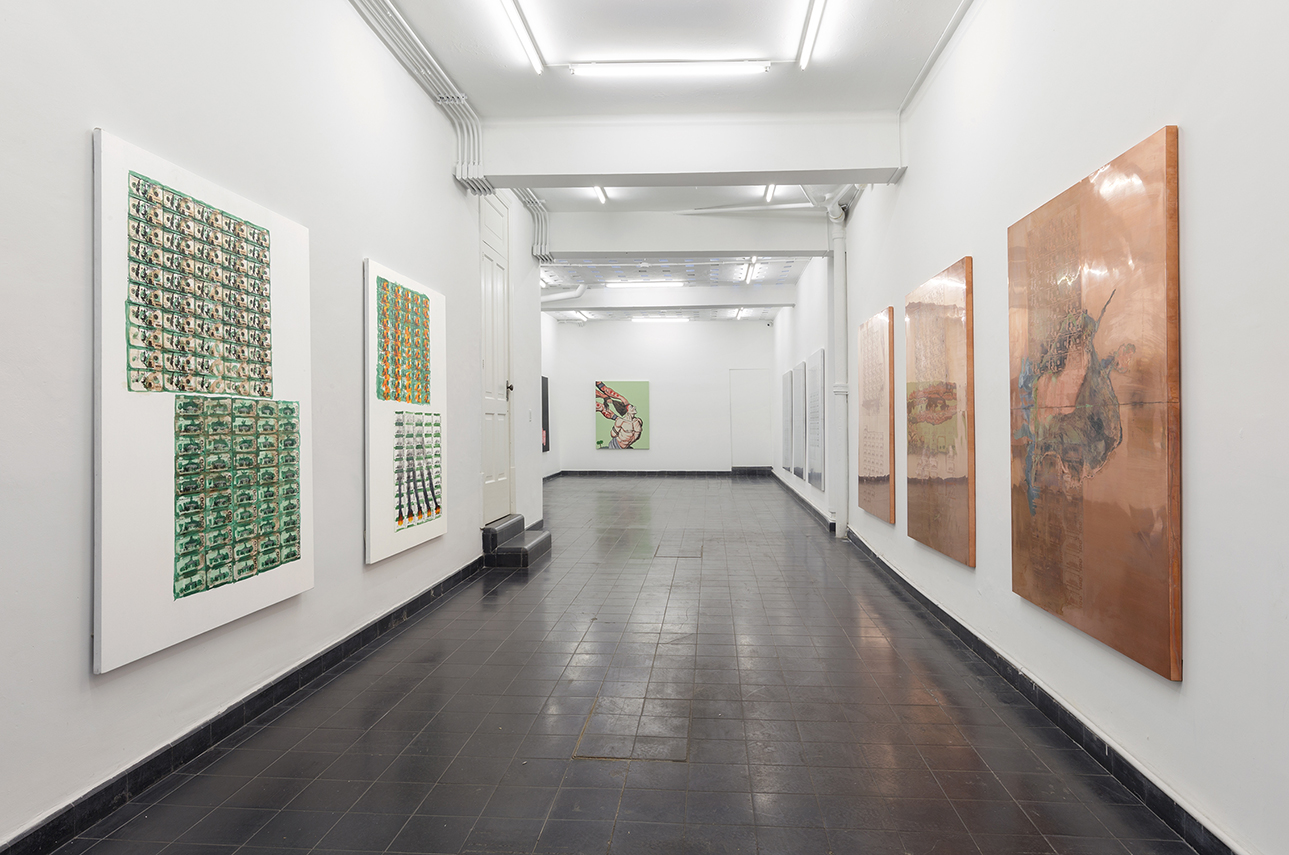











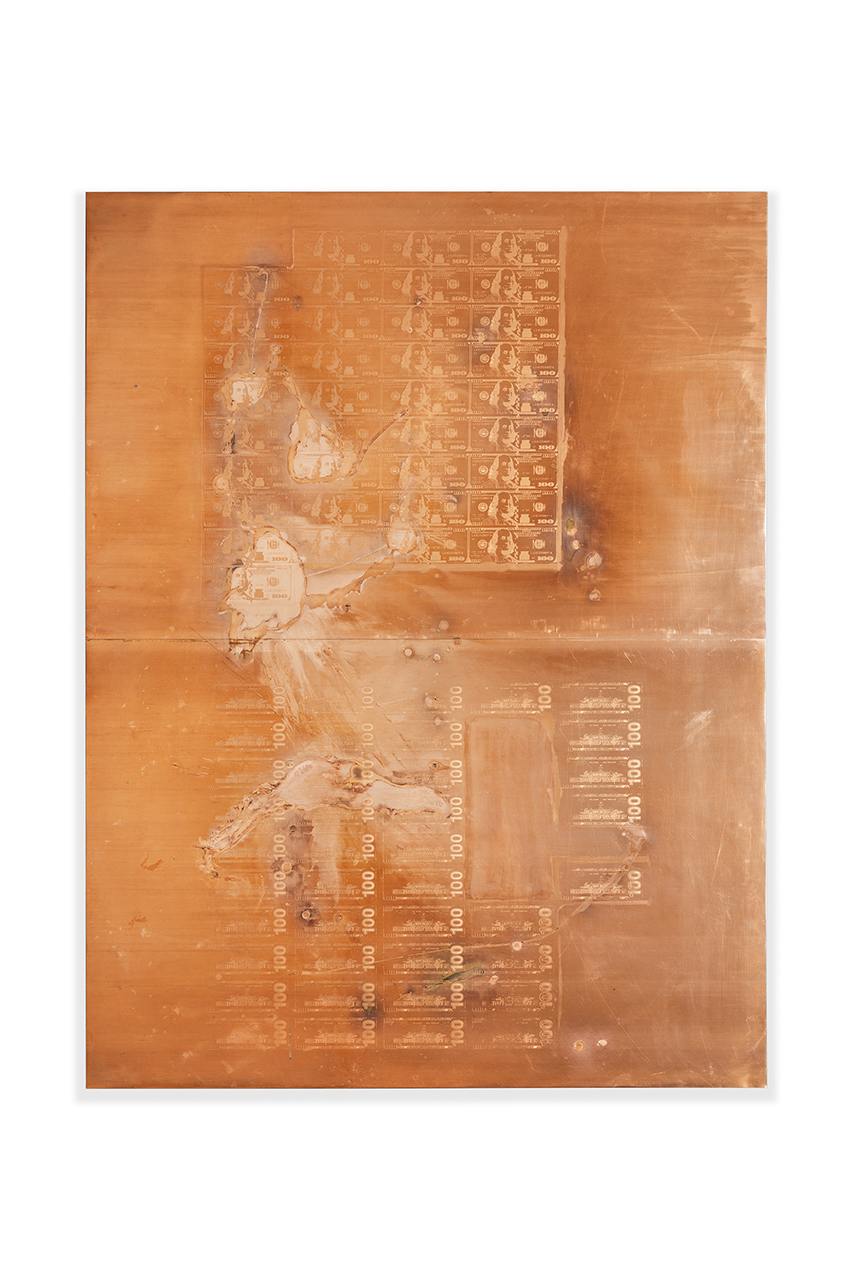
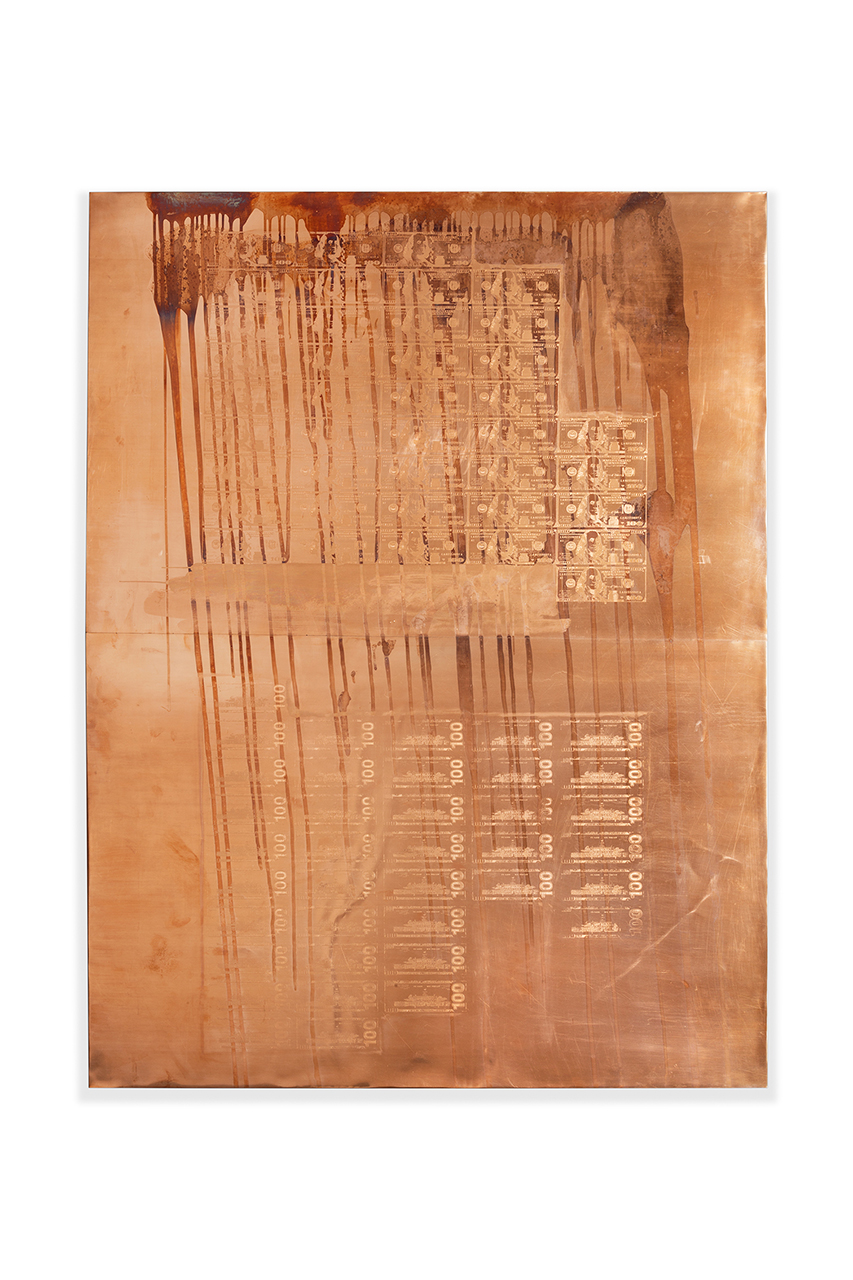
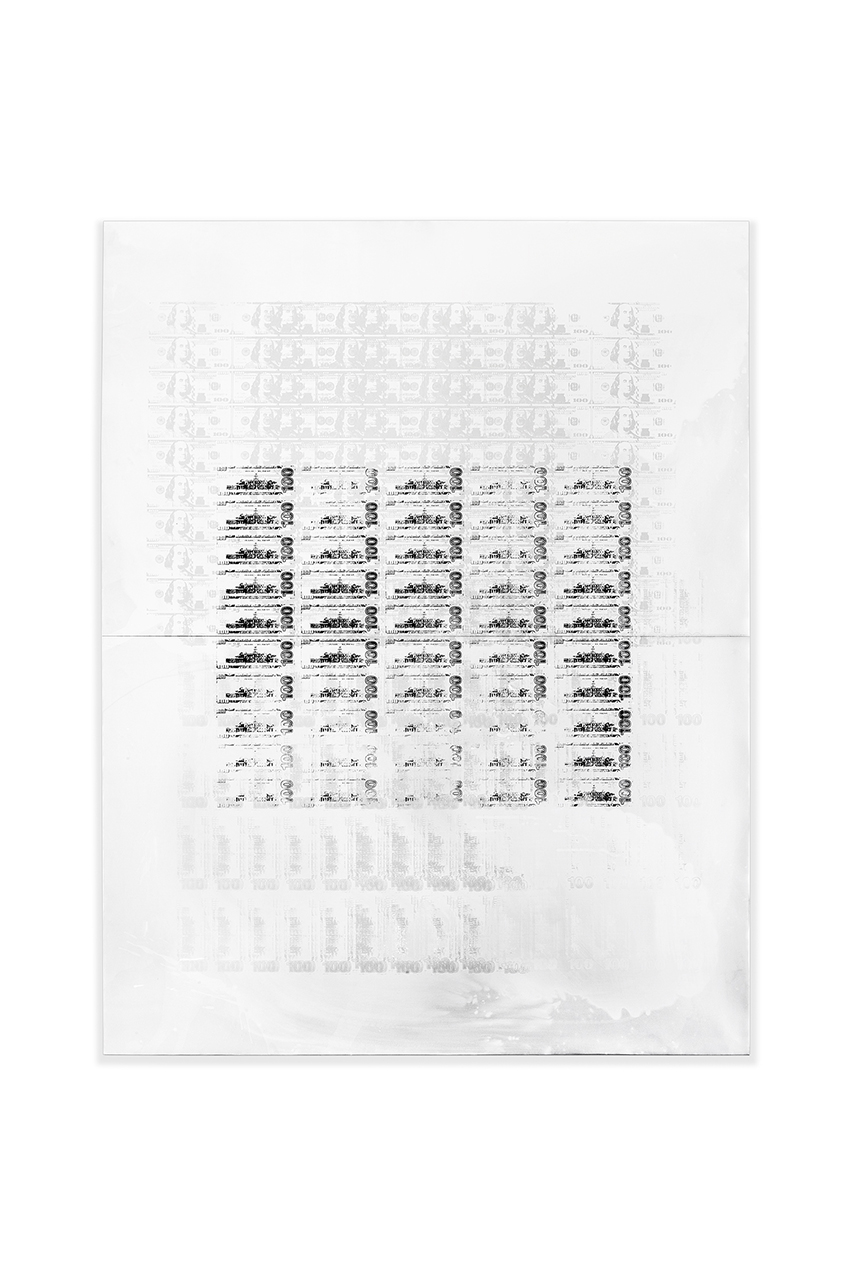


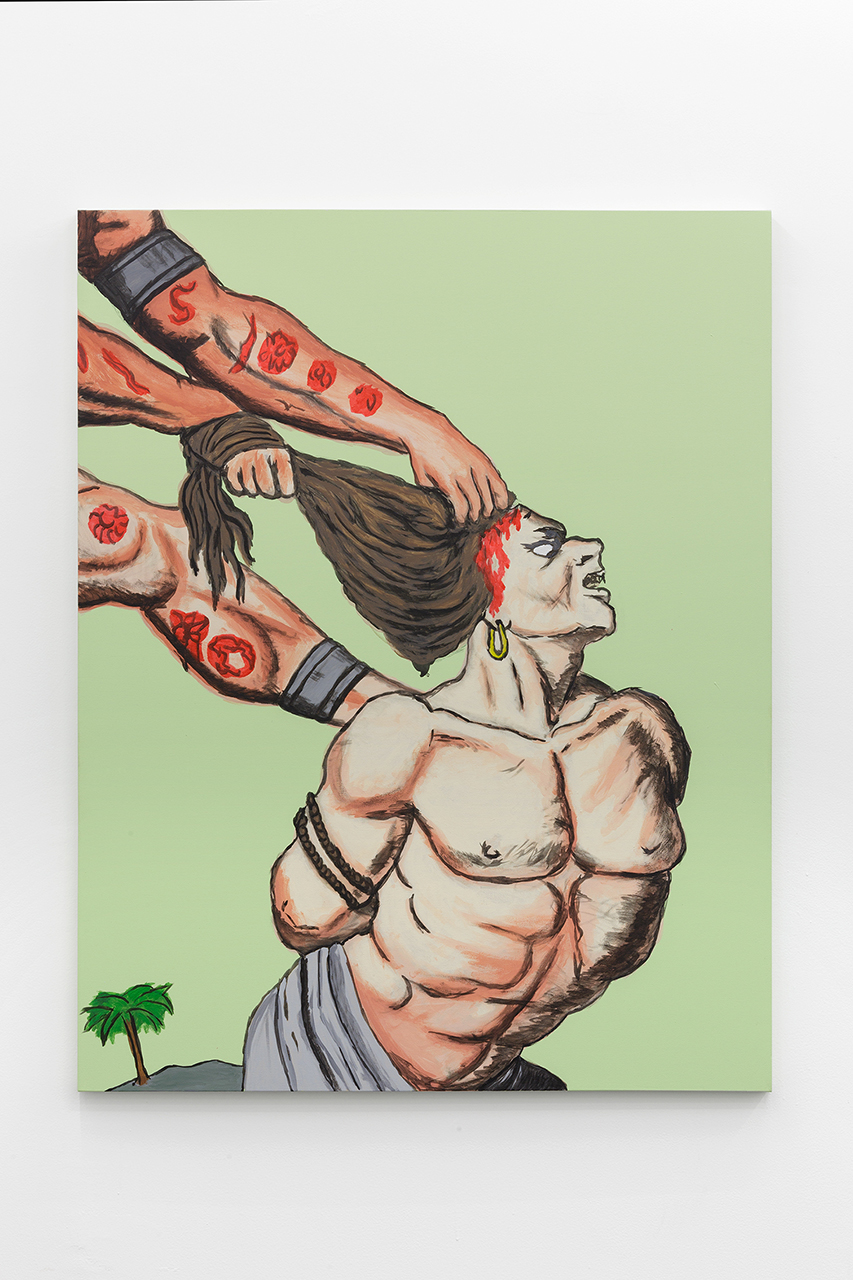
_GAGA.jpg)
_GAGA.jpg)
